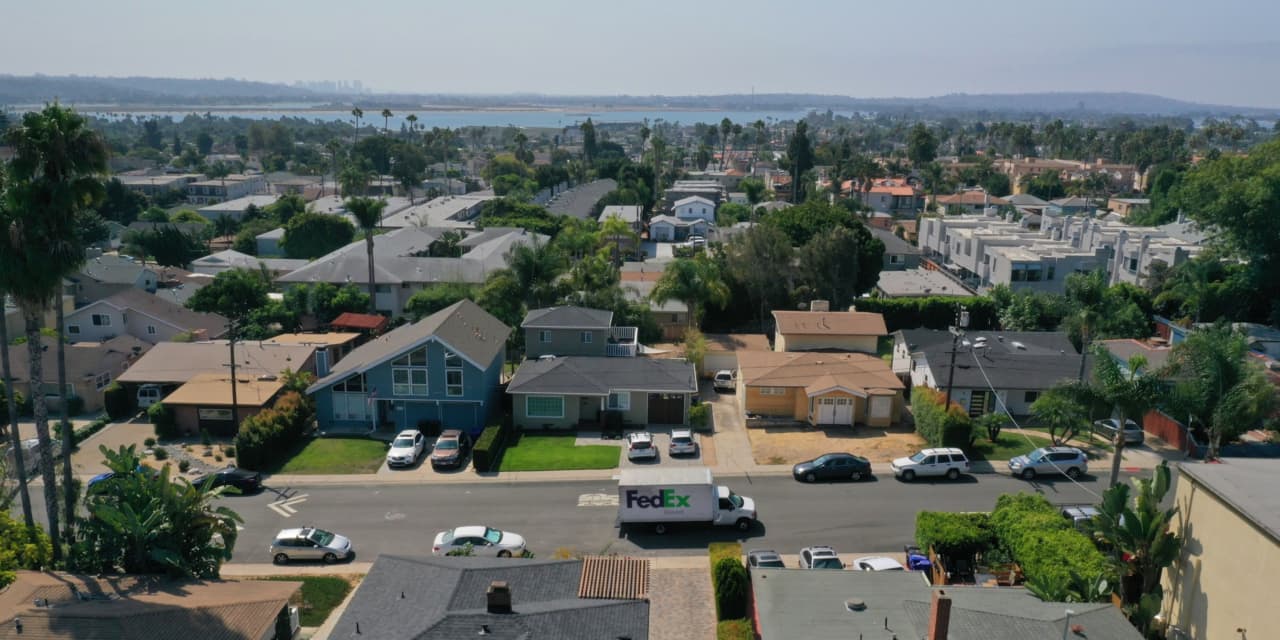Home buying season typically heats up in the spring—but prices in some cities have already taken off.
Listing prices in some northern, Midwestern, and western metropolitan areas increased much quicker than the rest of the U.S. in January, according to data from listing site Realtor.com.
Listing prices nationally were up modestly, with the median home in January at $409,500, according to Realtor.com. On a per-square-foot basis, a measurement that minimizes the impact of home size on price changes, listing prices were 3.3% higher than the year prior. (Barron’s parent company,
News Corp,
also owns Move, which operates Realtor.com.)
Prices might be higher, but lower mortgage rates—and the expectation that further drops would come later this year—have buoyed housing market optimism. The average mortgage rate ranged between 6.6% and 6.8% in the first six weeks of the year, down significantly from a peak near 8% in October,
Freddie Mac
data show. While hotter-than-expected economic data has recently put upward pressure on mortgage rates, industry economists expect mortgage rates to end the year near 6%, according to their most recent forecasts.
That could help explain why more houses are hitting the market. There were about 974,000 homes for sale in January, according to Realtor.com data, up 6.5% from one year prior.
Tighter monetary policy has cooled home price gains nationally from their frothy double-digit page earlier in the pandemic—but prices in some markets are gaining more quickly than others.
Barron’s recently screened Realtor.com’s January data, the most recent available, to identify the 10 markets where prices were gaining quickest.
We limited the screen to Realtor’s 100 largest metropolitan areas by household. To minimize distortion from the size of homes on the market, we evaluated prices using price-per-square foot.
We eliminated metropolitan areas where listing prices gained less than 0.63%—the national average—between January and the prior month. We then ranked the metros by year-over-year price growth, a metric preferred by economists because it strips out seasonal swings.
Syracuse, New York, topped the list, with prices per square foot up about 18% from January 2023. Two high-cost metros, greater New York City and San Diego, Calif., followed, with price growth of 17% and 14%, respectively. Albany and Toledo, Ohio, where prices rose about 13%, rounded out the top 5.
Other metros on the list include Oxnard, Calif.; Poughkeepsie, N.Y.; Boston; Springfield, Mass.; and Knoxville, Tenn.
The list broadly falls into three buckets, says Hannah Jones, a senior economic research analyst at Realtor.com. In the first group are affordable northeastern and Midwestern markets, such as Syracuse, Toledo, and Albany. “These markets retained some demand while other more expensive markets saw demand fall off,” she says. “As a result, they are now seeing the price growth that other markets saw a couple of years prior.”
Last year’s rise in mortgage rates added to home costs across the board—but the impact in dollar terms is greater in places where home prices are higher. That may have given an edge to markets like Syracuse and Toledo, where the median listing price is well below the national average. Economic investment, such as Micron’s planned semiconductor plant in central New York, may have also helped.
Prices in places like New York and Boston, which include the surrounding suburbs, are growing because high mortgage rates and prices have kept homeowners from moving, cutting down on supply and driving competition for homes close to major economic hubs. The California markets, meanwhile, are rebounding after high mortgage rates put pressure on prices last year.
Knoxville, the only southern locale on the list, ”is a relatively affordable market that has gained significant attention over the last couple of years,” Jones says. “We expect the market to see continued price growth in 2024 as low inventory keeps upward pressure on prices.” Inventory is higher than year-ago levels in Knoxville—but is 26% lower than it was four years ago, Jones noted, before the pandemic began.
A lack of homes for sale is one common factor throughout most of the markets. At a time when listings nationally are higher than they were a year ago, seven out of the 10 markets saw total inventory shrink. Home listings dropped the most in Springfield, Poughkeepsie, and Albany. “The biggest issue continues to be low inventory,” Jones says.
Write to Shaina Mishkin at [email protected]
Read the full article here




